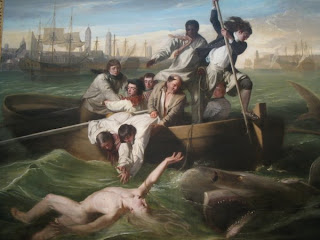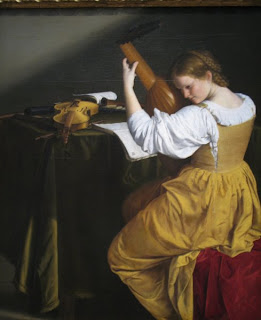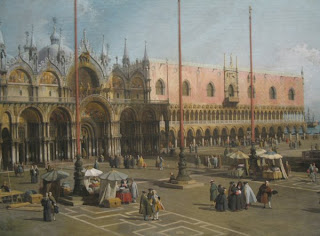This is the third time I’ve visited the National Gallery of Art in the last 3 years. When I go, it’s like visiting familiar friends. With each visit I renew my friendship and understanding, say “Ah, yes, this is why you appeal to me.” The playful French, the passionate Italian and Spanish, the precision of the German and the life-like images of the Dutch—I love them all. Here’s a smattering of some favorites. I took all of these photos two years ago with a point-and-shoot, hand-held digital camera using natural light. It’s tough to get sharp images, but you’re not allowed to use a tripod or a flash.

In a nod to the recent shark attach at our beach, I was pulled instantly to this sensational oil (John Copley Singleton, Watson and the Shark, 1778). The painting is based on a true event, the 1749 attack on 14-year-old Brook Watson while swimming in Havana Harbor.

Spanish artist Bartolomé Esteban Murillo painted Two Women at a Window (c. 1655/1660). It is unclear whether or not the scene depicts a young woman with a laughing chaperone in innocent play or a young courtesan attempting to lure a customer. I love the expression on the young woman's face.

The incredible still life by Flemish painter Osias Beert the Elder (Dishes with Oysters, Fruit, and Wine, c. 1620/1625) is a rich and gorgeous depiction of 17th century food. I love the detail.

Orazio Gentileschi's The Lute Player (c. 1612/1620) is more about the woman than the lute. The detail of her dress, how it’s constructed, and the rich folds of the heavy cloth and the warmth it exudes are pleasing.

The Square of Saint Mark’s, Venice (1742/1744) is by Italian painter Canaletto. I love the grandness of the square, the open sky, and the people going about their lives.

Finally, I must choose at least one Impressionist painting. This one, Girl Arranging Her Hair (1886) is by Mary Cassatt, an American. I love the colorful, playful, and vibrant tones of impressionist painting.

2 comments:
Hi there. Actually there is no entry fee at the Holocaust Museum.
It's worth a visit!
Jean (from the Museum)
Thank you for pointing that out. I did visit the Holocaust Museum 2 years ago. It is not an experience for soothing your mind, spirit, or soul. You must wear a very thick skin when you go. But I believe it is an important visit nevertheless.
Post a Comment